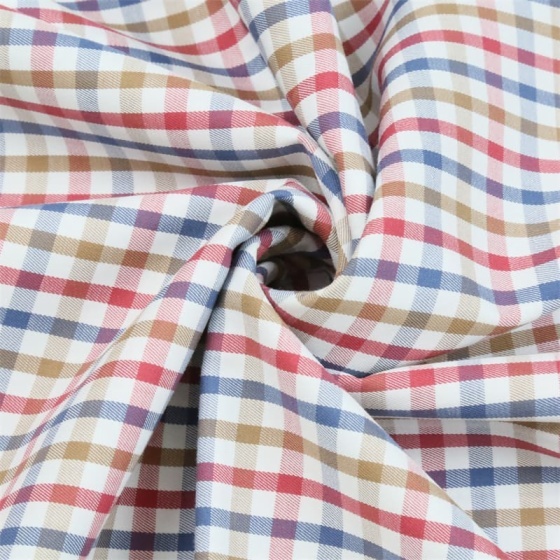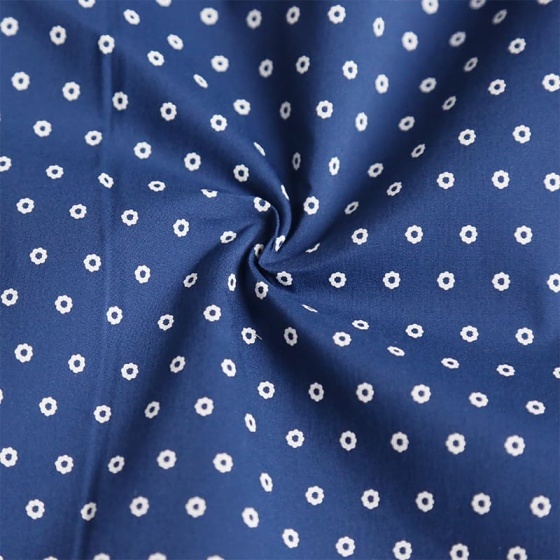The Future of Fashion: Embracing Digital Printed Fabric Technologies
Jul 19,2025
The Future of Fashion: Embracing Digital Printed Fabric Technologies
Table of Contents
- Introduction to Digital Printed Fabrics
- The Importance of Digital Printing in Fashion
- Advantages of Digital Printed Fabrics
- Sustainability and Eco-Friendliness of Digital Printing
- Customization: A New Era of Personalization
- Future Trends in Digital Fabric Printing
- Challenges Facing Digital Printed Fabrics
- Case Studies: Successful Implementations
- Conclusion
- FAQs About Digital Printed Fabrics
Introduction to Digital Printed Fabrics
The fashion industry is undergoing a significant transformation, and at the heart of this evolution lies **digital printed fabric technology**. This innovation is not merely a trend; it's a fundamental shift in how textiles are designed, produced, and consumed. Traditional printing methods have been the mainstay of the textile industry for centuries, but digital printing is revolutionizing the landscape. In this article, we will explore the myriad ways in which digital printing is shaping the future of fashion, offering insights into its benefits, challenges, and potential.
The Importance of Digital Printing in Fashion
Digital printing allows designers to express their creativity without the constraints imposed by traditional methods. The ability to print intricate designs directly onto fabric opens new avenues for artistic expression. It also enables the **rapid prototyping** of designs, which means fashion brands can respond to trends more quickly. As consumer preferences shift, the ability to adapt designs in real-time is invaluable.
Additionally, digital printing reduces material waste. Traditional screen printing often requires significant amounts of ink and fabric for setup, leading to excess waste. Digital methods, however, only use the necessary amount of ink for each design, making it a more efficient process.
Advantages of Digital Printed Fabrics
One of the primary advantages of digital printed fabrics is their versatility. Designers can easily experiment with colors, patterns, and textures without incurring high costs. This flexibility allows for small production runs, catering to niche markets and reducing overstock.
Moreover, digital printing provides the ability to create **photorealistic prints** and complex designs that are challenging to achieve with traditional methods. The technology supports a wide range of fabrics, including cotton, polyester, silk, and more, making it suitable for various applications from fashion to home textiles.
Speed and Efficiency
In an industry where timing is crucial, the rapid turnaround time of digital printing cannot be overstated. Designers can go from concept to finished product in much shorter timeframes, allowing them to launch new collections faster and meet consumer demand promptly.
Cost-Effectiveness
Digital printing can be more cost-effective for small runs, where traditional printing setups can be prohibitively expensive. By minimizing setup costs, brands can produce limited edition items that appeal to consumers looking for unique pieces.
Sustainability and Eco-Friendliness of Digital Printing
Sustainability is becoming a central theme in the fashion industry, and digital printing plays a crucial role in this movement. Traditional textile printing methods often involve toxic chemicals and processes that are harmful to the environment. In contrast, many digital printers use **water-based inks** that are less damaging, making them a more sustainable option.
Reducing Waste
Digital printing significantly reduces waste at multiple levels. It minimizes the amount of unused ink and materials, which translates to fewer resources consumed overall. Brands can produce on-demand, eliminating the need for large inventories that often end up as waste.
Ethical Production Practices
With the rise of consumer awareness regarding ethical fashion, brands leveraging digital printing can promote their commitment to sustainable practices. This transparency builds trust with consumers and enhances brand loyalty.
Customization: A New Era of Personalization
Consumers today crave personalization, seeking unique products that reflect their individual style. Digital printing allows for **customized fabrics and designs**, catering to this growing demand.
On-Demand Printing
Brands can offer on-demand printing services, allowing customers to select designs or even upload their artwork to create unique pieces. This level of customization not only enhances the consumer experience but also aligns with sustainability efforts by producing only what is needed.
Interactive and Engaging Experiences
The integration of technology with fashion opens up possibilities for interactive experiences. For instance, augmented reality (AR) can allow consumers to visualize how a fabric will look in different settings or on various garments before purchase.
Future Trends in Digital Fabric Printing
As technology advances, the capabilities of digital printing continue to expand. Here are a few anticipated trends that will shape the future of fashion:
Integration of AI and Machine Learning
Artificial intelligence is set to revolutionize digital printing by analyzing consumer behavior, predicting trends, and automating the design process. This could lead to more efficient production processes and tailored experiences for consumers.
Expansion of Fabric Options
The development of new fabric technologies will enhance digital printing applications. Innovations in textile composition will enable the creation of fabrics with unique textures and functionalities, expanding the possibilities for designers.
Challenges Facing Digital Printed Fabrics
While the benefits of digital printed fabrics are numerous, challenges remain. One significant issue is the **initial investment cost** of advanced printing technology. Smaller brands may struggle to afford high-quality printers and the associated setup costs.
Another challenge lies in the **durability of digital prints**. Some digital prints may fade or wash out more quickly than traditionally printed fabrics, raising concerns regarding longevity.
Case Studies: Successful Implementations
Numerous brands have successfully embraced digital printed fabric technology, showcasing its potential in the fashion industry.
Case Study 1: Spoonflower
Spoonflower is a platform that allows users to create custom fabric designs. By utilizing digital printing, Spoonflower has demystified the fabric design process, enabling individuals to produce unique textiles from their designs while minimizing waste.
Case Study 2: Nike
Nike's "Nike By You" program utilizes digital printing technology to allow customers to customize their shoes with unique patterns and colors. This initiative not only personalizes the shopping experience but also showcases Nike's commitment to innovation.
Conclusion
Digital printed fabric technologies are undeniably reshaping the landscape of the fashion industry. By fostering creativity, enhancing sustainability, and enabling customization, digital printing is paving the way for a more responsible and innovative future in textiles. As we embrace these changes, it becomes clear that the future of fashion lies in our ability to adapt and innovate, leveraging technology to meet the ever-evolving demands of consumers.
FAQs About Digital Printed Fabrics
1. What is digital printed fabric?
Digital printed fabric is created using digital printing technology, which allows designs to be printed directly onto textiles using inkjet printers.
2. How does digital printing benefit the fashion industry?
Digital printing provides several benefits, including reduced waste, faster production times, greater design flexibility, and the ability to create customized products.
3. Are digital prints durable?
The durability of digital prints can vary based on the quality of the inks and the printing process used. High-quality digital prints can be very durable if properly cared for.
4. Can I create my own designs for digital printing?
Yes, many companies offer services that allow you to upload your designs for digital printing on fabric.
5. Is digital printing more environmentally friendly than traditional printing?
Generally, yes. Digital printing tends to use less water and fewer harmful chemicals compared to traditional textile printing methods, making it a more sustainable choice.
By exploring the transformative potential of digital printed fabrics, we can better understand their essential role in shaping the future of fashion.
More Events
Understanding Cotton Dyed Fabric: A Comprehensive Guide to Textile Dyeing
Cotton dyed fabric is a cornerstone in the textile industry, especially within the realm of dyeing and weaving. The process of dyeing cotton fabric involves applying colorants to cotton fibers, resulting in a wide variety of hues and patterns that enhance the fabric's aesthetic appeal. This technique not only elevates the visual qualities of the fabric but also plays a crucial role in the overall
Dec 05,2025
How to Effectively Market Products Made from Printed Cloth Fabric: A Comprehensive Guide
How to Effectively Market Products Made from Printed Cloth Fabric Table of Contents 1. Introduction to Printed Cloth Fabric Marketing 2. Understanding Your Target Audience 3. Crafting a Unique Selling Proposition (USP) 4. Utilizing Social Media Platforms for Promotion 4.1 Building a Strong Brand Presence 4.2 Engaging Content Creation 5. Leveraging Influencer Collaborations 6. Implementing SEO Stra
Dec 04,2025
Quality Linen Denim Fabric Supplier Supports Modern Apparel
In the fashion industry, the search for materials that offer both aesthetic appeal and practical comfort is ongoing. A blend like linen denim addresses this demand by combining the classic, durable look of denim with the natural, breathable properties of linen. For designers and clothing brands, working with a reliable quality linen denim fabric supplier is key to creating garments that meet the expectations of today's consumers.
Dec 03,2025
Do Not Heasite To Contact W&S, Your Comprehensive Solution Provider Now!
We like produce phone cases but we more like to see you earn lots of money by working with us.
Quick Link
Garment
Copyright © Nantong Wang and sheng Textile Co., Ltd. All Right Reserved.

Whatsapp: 8615996649800
Looking forward to your call
Tel: +86-15996649800
Looking forward to your call
Email: Nick.wang@ntwangsheng.com
Looking forward to your letter





